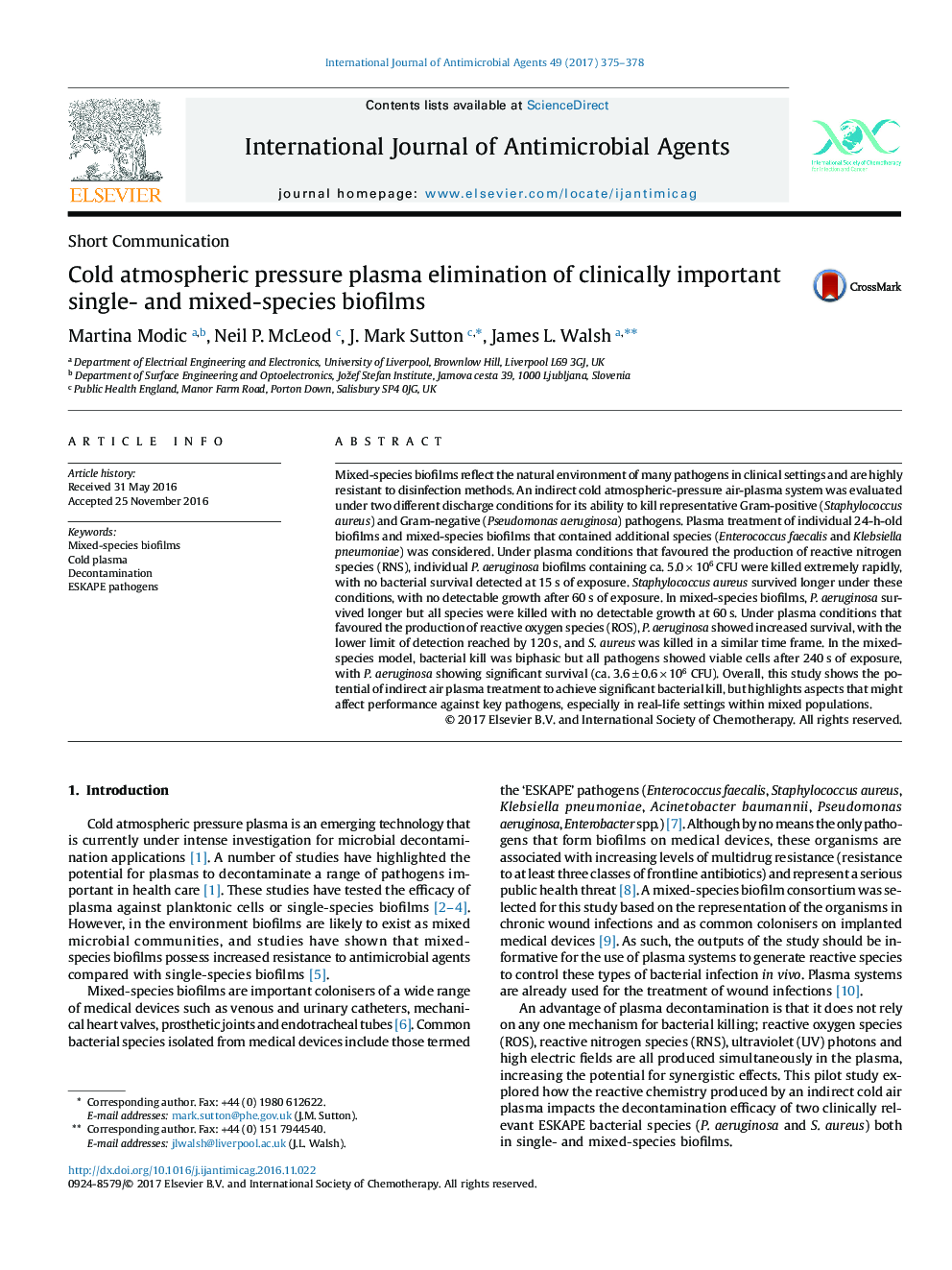| Article ID | Journal | Published Year | Pages | File Type |
|---|---|---|---|---|
| 5667122 | International Journal of Antimicrobial Agents | 2017 | 4 Pages |
â¢Cold atmospheric pressure plasma was effective for biofilm decontamination on polymeric surfaces.â¢Mixed-species biofilms showed increased resistance to plasma treatment.â¢Variation in plasma chemistry highlighted different sensitivities between species within a mixed-species biofilm.
Mixed-species biofilms reflect the natural environment of many pathogens in clinical settings and are highly resistant to disinfection methods. An indirect cold atmospheric-pressure air-plasma system was evaluated under two different discharge conditions for its ability to kill representative Gram-positive (Staphylococcus aureus) and Gram-negative (Pseudomonas aeruginosa) pathogens. Plasma treatment of individual 24-h-old biofilms and mixed-species biofilms that contained additional species (Enterococcus faecalis and Klebsiella pneumoniae) was considered. Under plasma conditions that favoured the production of reactive nitrogen species (RNS), individual P. aeruginosa biofilms containing ca. 5.0âÃâ106 CFU were killed extremely rapidly, with no bacterial survival detected at 15âs of exposure. Staphylococcus aureus survived longer under these conditions, with no detectable growth after 60âs of exposure. In mixed-species biofilms, P. aeruginosa survived longer but all species were killed with no detectable growth at 60âs. Under plasma conditions that favoured the production of reactive oxygen species (ROS), P. aeruginosa showed increased survival, with the lower limit of detection reached by 120âs, and S. aureus was killed in a similar time frame. In the mixed-species model, bacterial kill was biphasic but all pathogens showed viable cells after 240âs of exposure, with P. aeruginosa showing significant survival (ca. 3.6â±â0.6âÃâ106 CFU). Overall, this study shows the potential of indirect air plasma treatment to achieve significant bacterial kill, but highlights aspects that might affect performance against key pathogens, especially in real-life settings within mixed populations.
